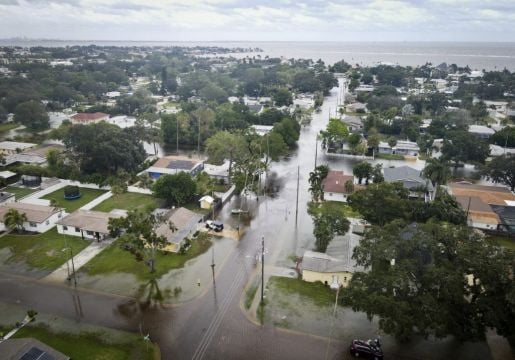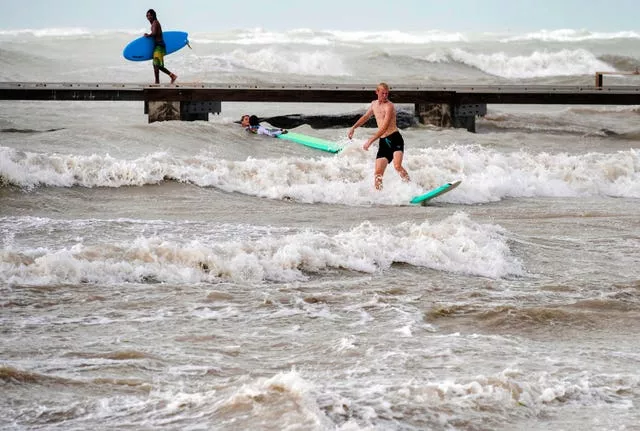
By Stephen Smith, Kate Payne and Heather Hollingsworth, Associated Press
Helene came ashore amid warnings from the National Hurricane Centre that the enormous system could create a “nightmare” storm surge.
There were at least four storm-related deaths.
Video on social media sites showed sheets of rain coming down in Perry, Florida, near where Helene made landfall, and siding being torn off buildings.
One local news station showed a home that had flipped over.
The community and much of surrounding Taylor County were without power.
In Citrus County, some 120 miles south of Perry, first responders were out in boats early on Friday to rescue people trapped by the flooding.
With maximum sustained winds of 70mph, Helene continued to weaken while moving further inland over Georgia.
The storm was about 40 miles east of Macon and about 100 miles south east of Atlanta, moving north at 30mph at 5am local time, the hurricane centre in Miami reported.

“We expect it to weaken further. It’s going to turn northward and turn northwestward and eventually move into Tennessee and Kentucky, and merge with a funnel system up in that area,” said Jack Beven, a senior hurricane specialist at the National Hurricane Centre.
The storm should continue to weaken on Friday afternoon, with winds dropping below 40mph, but it will still produce widespread heavy rain over the Appalachian Mountains with the possibility of mudslides and flash flooding, Mr Beven said.
The hurricane centre said Helene roared ashore at around 11.10pm local time on Thursday near the mouth of the Aucilla River in the Big Bend area of Florida’s Gulf Coast.
It had maximum sustained winds estimated at 140 mph.
That location was only about 20 miles north west of where Hurricane Idalia came ashore last year at nearly the same ferocity and caused widespread damage.
The hurricane’s eye passed near Valdosta, Georgia, as the storm churned rapidly north into Georgia on Thursday night.

The National Hurricane Centre issued an extreme wind warning for the area, meaning possible hurricane-force winds exceeding 115mph.
Helene prompted hurricane and flash flood warnings extending far beyond the coast up into northern Georgia and western North Carolina.
More than 1.2 million homes and businesses were without power in Florida, more than 900,000 in Georgia and more than 927,000 in the Carolinas, according to the tracking site poweroutage.us.
The governors of those states and Alabama and Virginia all declared emergencies.
One person was killed in Florida when a sign fell on their car and two people were reported killed in a possible tornado in south Georgia as the storm approached.
One person died in Charlotte, North Carolina, when a tree fell on a home as the storm blew through the area early on Friday.
Forecasters also warned that Storm Isaac had strengthened on Friday into a hurricane in the open waters of the Atlantic Ocean and could cause dangerous waves in parts of Bermuda.
The storm was about about 980 miles (1,577km) east-northeast of Bermuda and about 1,175 miles (1,890km) west of the Azores, with maximum sustained winds of 75 mph (121kph). It was heading east at 12mph (19kph).
There were no coastal watches or warnings in effect, but the waves could cause life-threatening surf and rip current conditions in Bermuda, the hurricane centre said.
Potentially dangerous waves also could spread to the Azores, the centre said. Isaac is expected to strengthen before gradually weakening by the end of the weekend.
The storm has been churning in the ocean as Helene made landfall in northwestern Florida.





